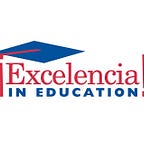Both/And: Student Loan Forgiveness and Financial Aid for Latinos
by Deborah Santiago and Janette Martinez
Addressing current student debt but not addressing other aid can exacerbate some of the inequities we seek to address through loan forgiveness. We must support both current borrowers and future students. As policymakers debate how to provide economic relief and recovery from the COVID-19 pandemic, they should be aware of impact thresholds for the broader Latino population. Any amount of loan forgiveness would provide relief to Latino borrowers, and investing in additional aid will help ensure future students are able to enroll in higher education and complete their postsecondary degrees.
What amount of student loan debt forgiveness would help Latino borrowers?
Current debates around loan forgiveness amounts look at $10,000 or $50,000 in debt forgiveness, and Latino students would greatly benefit from both. At $10,000 of forgiveness, about half of Latino borrowers would have their entire debt forgiven. At $50,000 of forgiveness, almost all Latino borrowers would have the total of their current loan debt forgiven.
Among undergraduate students who began in 2012 (the latest data available), 51% of Latino students borrowed to pay for their undergraduate or graduate education.[1] Some amount of loan forgiveness would help Latino borrowers, especially as the COVID-19 pandemic continues. Consider the breakdown in borrowing by Latino students:
Loan forgiveness can help with economic recovery from the pandemic and address issues Latino borrowers were already facing before the pandemic, such as student loan default. Consider that Latinos are more likely than their white peers to default (35% vs. 20%). The default rate is higher for non-completers (40%). Additionally, Latino bachelor degree holders are twice as likely than their white peers to default (12% vs. 6%). The higher default rates can be at least partially attributed to the difference in earnings, even with a degree. Latinos with a bachelor’s degree earn an average of $49,300, compared to overall average of $54,800 among all bachelor’s degree graduates.
Debt forgiveness would provide critical aid to a group in need of financial relief. While important and of value, it’s not the only issue facing Latinos. Increased aid would help future Latino students, those who started but did not complete (often because of costs), and those looking to up-skill in response to the current pandemic.
Despite being low-income, why aren’t loan amounts for Latino students higher?
The majority of Latino students are first-generation and low-income and are adjusting to a financial aid system that was not built for them. Despite having high financial need, Latinos receive the lowest average financial aid award amongst all racial/ethnic groups. Half of Latinos do not borrow for their undergraduate education, citing that their costs have been covered.[2]
Latinos have adjusted their attendance to save on the cost of tuition and work to cover their costs. Most Latinos attend public institutions (67%), which are less costly. Most Latinos (60%) attend exclusively part-time or mix their enrollment between full-time and part-time. Over half (51%) of Latino students worked at least 30 hours a week while enrolled in school. This has implications, however, on time to completion. A fifth of Latinos at public four-years (20%) and a quarter of Latinos at public two-years are still enrolled six years after beginning their degree.
What should policymakers do to support current borrowers and future Latino students?
In these challenging times, lawmakers can do two things to improve affordability for Latinos and others: 1) provide at least $10,000 in loan forgiveness to support those who have debt based on their college-going; and, 2) significantly invest in students, including Latinos, who are still to come so that college-going can become a reality. This includes students who forgo loans and make other choices to make college affordable. Data are clear: $10,000 would provide relief and impact for most Latino borrowers. We should also support the Latino students looking to enroll and provide additional financial aid. (For a full list of Excelencia’s affordability priorities, visit our website.) Failing to address both issues would only further exacerbate inequities in our postsecondary system. Providing relief now and supporting future students are both needed to support Latinos’ economic prosperity and accelerate Latino student success.
[1] U.S. Department of Education, National Center for Education Statistics, 2012/17 Beginning Postsecondary Students Longitudinal Study (BPS:12/17).
[2] U.S. Department of Education, National Center for Education Statistics, National Postsecondary Student Aid Survey
